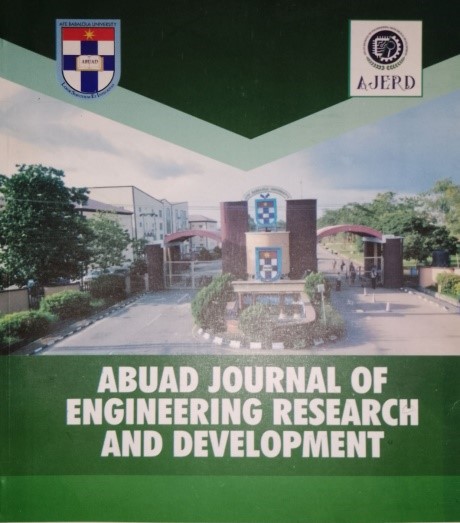Effect of Heat Treatment on Microstructure, Acidic Corrosion Resistance and Wear Performance of Low-Carbon Steel
Main Article Content
Abstract
Low-carbon steels are widely used in structural and industrial applications, but their performance can be significantly enhanced through controlled thermal processing. This paper looks at how different heat treatment techniques affect low-carbon steel's microstructure, corrosion resistance in acidic settings, and wear performance. Mechanical and electrochemical behaviours were evaluated under four heat treatment conditions: normalizing (A), water quenching (Q), normalizing followed by quenching (AQ), and double (cyclic) quenching (QQ). Phase changes were characterized by optical microscopy; Vickers microhardness testing and depth profiling evaluated hardness distribution. Using linear polarization techniques, electrochemical corrosion tests in dilute sulfuric acid (H₂SO₄) were run to find corrosion potential, current density, and polarization resistance. Using a pin-on-disc apparatus, wear performance was also assessed under 10 N and 20 N loads. Results revealed that quenching greatly increased surface hardness because of martensite formation; Q had the highest microhardness but lower corrosion resistance because of microstructural stress and heterogeneity. By contrast, AQ offered a balanced microstructure with fair hardness and excellent corrosion resistance. Wear rates were closely connected to hardness; QQ showed the greatest wear resistance at both load conditions. These results highlight the importance of heat treatment in maximizing the surface integrity of carbon steel for uses in mechanically hostile and acidic environments.
Downloads
Article Details

This work is licensed under a Creative Commons Attribution-NonCommercial-ShareAlike 4.0 International License.
References
Alfirano, U. S. Eben, & Hidayat M. (2018). Microstructures and mechanical properties of duplex low carbon steel. IOP Conference Series: Materials Science and Engineering, 344(1), 012001, doi: 10.1088/1757-899X/344/1/012001.
Singh A. K., Bhattacharya B., and Biswas S. (2024). High strength, ductility and sheet formability by normalizing and quenching of low carbon microalloyed dual-phase steel. Materials Science and Engineering: A, 890, 145848, doi: https://doi.org/10.1016/j.msea.2023.145848.
Fu Y., Gao J., Pang Y., Tong W., & Zhang H. (2020). Surface nano-alloying treatment of low carbon steel. Metallic Materials/Kovové Materiály, 58(3).
Paul S. (2015). Thermally Sprayed Corrosion Resistant Alloy Coatings on Carbon Steel for use in Supercritical CO2 Environments. in CORROSION 2015, All Days, NACE-2015-5939.
Aramide B., Pityana S., Jamiru T., Popoola P., & Sadiku R. (2021). Influence of Vanadium-Chromium Carbide on the Microstructure of Reinforced FeCrV15 Hardfacing during Laser Cladding Deposit. Journal of Materials Engineering and Performance, doi: 10.1007/s11665-021-06153-w.
Aramide B., Pityana S., Sadiku R., Jamiru T., & Popoola P. (2021). Improving the durability of tillage tools through surface modification—a review. The International Journal of Advanced Manufacturing Technology, 116(1), 83-98, doi: 10.1007/s00170-021-07487-4.
Podaný P., Studecký T., & Kocijan A. (2023). Material Properties of High-strength High Chromium TWIP Steel with Increased Corrosion Resistance. Manufacturing Technology Journal, journal article, 23(2), 241-246, doi: 10.21062/mft.2023.025.
Aramide B., Popoola P., Sadiku R., Jamiru T., & Pityana S. (2021) Influence of extra chromium addition on the microstructure, hardness, and corrosion behaviour of high carbon ferrochrome FeCrV15 deposited through laser cladding on steel baseplate for tillage application. Surface Topography: Metrology and Properties, 9(4), 045029, doi: 10.1088/2051-672x/ac314f.
Puspitasari P., Alifian C., Aripriharta A., Razak J. A., & Pratama M. M. A. (2020). Corrosion Resistance Analysis of ST37 Carbon Steel Material Using Phosphate Conversion Coating in Various Immersion Durations. Key Engineering Materials: Trans Tech Publ, 851, 61-67.
Krishna N. G., Thinaharan C., George R. P., Parvathavarthini N., & Kamachi Mudali U. (2015). Surface modification of type 304 stainless steel with duplex coatings for corrosion resistance in sea water environments, Surface Engineering, 31(1), 39-47, doi: 10.1179/1743294414y.0000000354.
Aramide B., Sadiku R., Popoola P., Pityana S., & Jamiru T. (2022). Effect of powder flowrate on the microstructure of FeCrV15 clad, developed via the laser cladding technique. Materials Today: Proceedings.
Aramide B., Sadiku R., Popoola P., Pityana S., & Jamiru T. (2022). The microstructure and anti-wear property of FeCrV15 and FeCrV15+Cr deposits fabricated via laser deposition on steel base-plate for soil-working tools. Applied Physics A, 128(6), 490, doi: 10.1007/s00339-022-05632-8.
Herbst S., Schledorn M., Maier H. J., Milenin A., & Nürnberger F. (2016). Process Integrated Heat Treatment of a Microalloyed Medium Carbon Steel: Microstructure and Mechanical Properties. Journal of Materials Engineering and Performance, 25(4), 1453-1462, doi: 10.1007/s11665-016-2004-9.
Zhao X., Zhang, X., Zhou, J., Chen, Y., Zhang, F., Zhang, J., & Yan, Q. (2025). Direct quenching and double tempering obtain high strength and toughness of Cu-bearing HSLC martensitic steel. Journal of Materials Research and Technology, 35, 13-24, doi: https://doi.org/10.1016/j.jmrt.2025.01.006.
Zhou X., Zhao W., Dong L., & Song N. (2022). Effect of Quenching and Tempering Temperatures on Microstructure and Properties of Ultrahigh Strength Cast Steel. Steel Research International, 93(11), 2200328, doi: https://doi.org/10.1002/srin.202200328.
Branco R., & Berto F. (2018). Mechanical Behavior of High-Strength, Low-Alloy Steels. Metals, 8(8), 610, [Online]. Available: https://www.mdpi.com/2075-4701/8/8/610.
Singh R., Joshi A., & Rani S. (2025). Transforming Sustainable Business Models for Manufacturing Industry to Build Zero Carbon Industry in Zero Carbon Industry, Eco-Innovation and Environmental Sustainability, Singh R., Joshi A., Filho W. L., & Khan S. Eds. Cham: Springer Nature Switzerland, 3-19.
Colla V., & Branca T. A. (2021). Sustainable Steel Industry: Energy and Resource Efficiency, Low-Emissions and Carbon-Lean Production. Metals, 11(9), 1469. [Online]. Available: https://www.mdpi.com/2075-4701/11/9/1469.
Yu W. W., LaBoube R. A., & Chen H. (2019). Cold-formed steel design. John Wiley & Sons.
Aramide B. P., Jamiru T., Adegbola T. A., Popoola A. P. I., & Sadiku E. R. (2024) "Influence of TiB2 Incorporation on Microstructural Evolution in Laser-Clad FeCrV15 + TiB2 Deposits. Journal of Materials Engineering and Performance, doi: 10.1007/s11665-024-09618-w.




